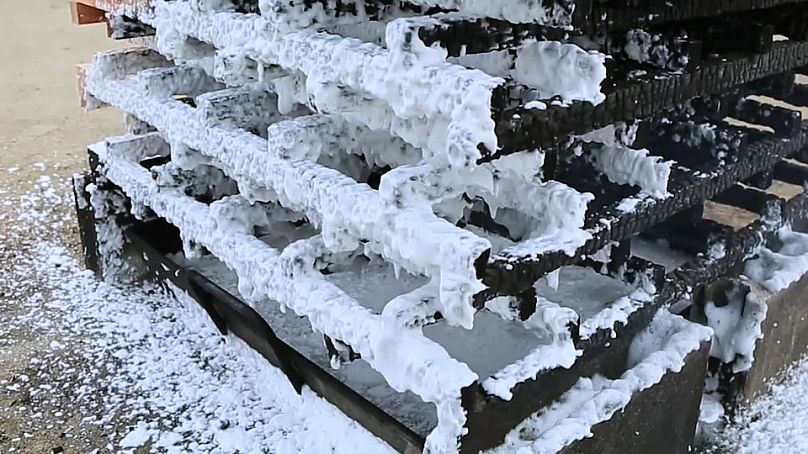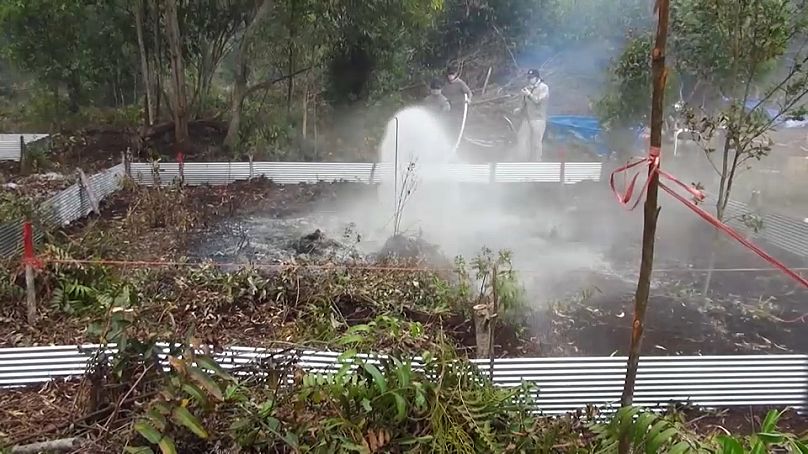Global Japan looks at how a new eco-friendly fire-fighting foam, could be a global game-changer.
Every year, deadly wildfires destroy homes and consume vast swathes of natural habitat. In this episode we see how a new eco-friendly fire-fighting foam, could be a global game-changer.
Lessons from Kobe
Wildfires ravage many parts of the world and with predictions of hotter, drier weather we are likely to see even more of them in future. The Japanese city of Kitakyushu had 10 forest fires last year alone. It was here the fire service came up with the fire-fighting foam. It was originally conceived to reduce the water needed to put out building fires after the devastating 1995 Kobe earthquake.
“During this earthquake, many fires started. At the time, fire hydrants and fire cisterns were destroyed by the earthquake and we couldn’t store water,” Sakamoto Masaaki, from the Fire and Disaster Management Bureau in Kitakyushu explained.
Teaming up with a city university and soap company, the fire service perfected the foam which is created by mixing a solution, made from naturally-sourced soap, into water.
The foam is chemical-free, biodegradable and works by disrupting water droplets.
“When the fire extinguishing agent is mixed, the droplet of water is not able to form and becomes sticky. So, it’s well absorbed in the openings of fabrics or wood,” Masaaki said.
The success of the foam focused researchers’ minds on how it could be used elsewhere, notably wildfires.
University of Kitakyushu research shows that it’s up to 266 times less harmful than other synthetic versions.
“There is data showing that water consumption can be reduced to less than one seventeenth. And for environmental performance, it is much less toxic to fish and other aquatic life than synthetic extinguishing agents," said Dr. Kawahara Takayoshi, Director, Research & Development Department, Shabondama Soap Company Ltd.
“In addition, as it is 100 percent decomposed by environmental microorganisms, there is no residue in the environment,” he added.
“International academic conferences for wildfires are organised across the world. We took part with university professors and staff from Kitakyushu City fire department. Some people were interested in our environmentally-friendly extinguishing agent,” Morita Hayato, President of Shabondama Soap Company Ltd, told Euronews.
Protecting peatland
The foam has made its way to Borneo island. Home to dense forests and waterways, peatland fires are a particular problem. Indonesian university researchers have been trying out the foam in a range of experiments - including on a test fire.
Ten months later, they found the vegetation had grown back.
When peat catches fire, embers can continue burning underground for a long time, releasing harmful gases. The Japanese soap-based foam penetrates the soil, putting them out. Something that was invaluable in Borneo in 2019, during a real forest fire.
Field Coordinator Kitso Kusin told Euronews: “After we put out the fire, the next day it was back on. Luckily at that time, there was a stock of Shabondama soap left over from the previous field testing that we used to put out the fire.
“Even though we didn’t have much soap left, we felt that the results were very effective in putting out the remaining fires.”
Back in Japan, green-minded Kitakyushu now plans to test the foam in Chiang Mai, in Thailand, too. Further building on university-industry collaborations and helping to cut global CO2 emissions.
“We hope that with the use of this foam fire extinguisher, we can control CO2 emissions a little and greatly contribute to climate change measures,” said Arita Yuichi, Director of Kitakyushu City's Environment Bureau.














